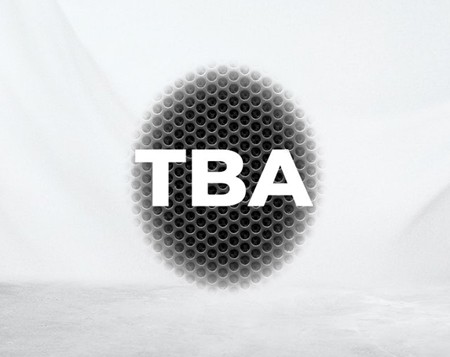source:Industry News release time:2022-04-20 Hits: Popular:Brand bar audio wholesale

Audio is a kind of metaphysics, and it is also a kind of belief, but in fact, the wire connecting the audio equipment is more "fantasy", and a complete wire is composed of plugs and wires. A set of audio equipment, whether it is professional or civilian, needs to be connected with various audio wires before it can be used. The following are some introductions to commonly used plugs and wires.
1. Commonly used audio and video equipment connection plugs
In an audio and video project, the types of output and input signals of equipment can be divided into audio signals and video signals (this time only a brief introduction); audio signals can be roughly divided into balanced signals and unbalanced signals according to different impedances (audio source equipment such as DVD players / decks / CD players and outputs are mostly unbalanced signals). Therefore, the connection plug is also divided into balanced and unbalanced. The balanced plug is a three-core structure, and the unbalanced plug is a two-core structure. In the audio plug, there is also a special plug for connecting the power amplifier and the speaker. This kind of plug is usually a four-core structure (there are also two-core and eight-core) and because it was invented by the Swiss NEUTRIK company, it is also called "NEUTRIK". (Nutric) plug" or "four-pin (two-pin, eight-pin) speaker plug".
1.1. Commonly used balanced signal plugs:
A. XLR plug (XLR):
The XLR head is divided into XLR Male and XLR Female. The identification of male and female XLR heads is very simple. The one with "needle" is "male head", and the one with "hole" is "female head". The input and output ports of many audio equipment are XLR interfaces, the interfaces with "pins" are also "male sockets", and the interfaces with "holes" are "female sockets".
B. Large three-pin plug or 6.3mm three-pin plug (PhoneJack Balance):
1.2. Commonly used unbalanced signal plugs:
A. Big two-pin plug (PhoneJack Unbalance)
Five tips to help you mix professional sounds.
Balancing the volume of all tracks is the first step to a successful downmix. Getting the real air and finishing your mix is our next step.
Here, we have five tips for making your mixes cleaner and more professional-sounding.
1. Don’t forget the reverb
We often spend hours figuring out how to get a unique sound in the mix, but it's easy to forget that we've added reverbs or other effects to our audio (www.gae-pro.com), which can affect the frequency response of the entire audio.
Most people habitually add a reverb to their audio and choose a tone with preset parameters, which sounds great. But you need to think a little further to make sure your processed audio sounds comfortable with the reverb effect applied. If the reverb sounds good, that's great; but do you really need a really big reverb?
Likewise, if most of the reverb-processed vocals sound pretty good, would you ignore the tinny pops that pop up every time on the lead track? Hopefully you won't overlook this, and you can trim it with an equalizer, which can enhance the drama of the reverb to achieve the tone you need.
2. Be aware that sometimes you add too much high frequency
It's one thing to sound bright and clear, but it's another thing to sound too sweet.
First of all, you have to judge whether your high frequency is tuned too much. Every morning is the best time to listen to high frequencies. The first thing to do when you get up is to play a piece of audio that you have adjusted (www.gae-pro.com). Whether the frequency volume is appropriate.
If you listen to it at night, you may find that the downmixed audio sounds too bright in the high frequencies. Don't be surprised. In the process of downmixing, you do have to put a lot of effort into making the whole thing sound more natural and balanced.
Just add an EQ to the output channel to limit the high frequencies, and you should be able to easily tune the desired tone.
3. Avoid low frequency turbidity
Many people tend to over-tune the low end when they mix. Unless you're working in a nightclub, you don't really need to make a fuss about frequencies below 40-50Hz.
Your speakers will reflect the individual frequency bands in the audio you send to them. Therefore, if your speakers emit a lot of low frequency sound, they will seriously affect the loudness of other frequencies entering the human ear, and the sound of other frequency bands will be canceled to a certain extent during the downmixing process.
Use an equalizer to reduce the low frequency part of some sounds that do not need low frequency, which will effectively improve the clarity of the overall downmix.
Popular recommendation
F118 MK2 Brand bar audio sales
2021-07-14Resolution 2 SHCar stereo Vendor
2021-07-17F1 Mini bar sound Factory
2021-07-26F218 Mk2 Learning audio Vendor
2021-07-14C10 Sound bar manufacturer
2021-07-26XD18I Bar speakers wholesale
2021-07-26Resolution 1 Bar ktv sound Vendor
2021-07-16Infrabass 218Sound for bars Vendor
2021-07-14F88 Car stereo Merchant
2021-07-16Resolution 5T Touring KTV audio wholesaler
2021-07-16F10 Nightclub sound Vendor
2021-07-26EVO 7THBar sound company
2021-07-17Meeting audio and power amplifier matching elements.Bar use sound Vendor
2021-11-13How to achieve the desired effect of stage sound!
2021-11-05Mateng Audio, a professional audio equipment company for bars
2022-11-23Common speaker installation modes in line array speaker system engineering.Bar speaker Factory
2022-05-07What causes noise in professional entertainment audio!Car stereo Vendor
2021-10-21Professional audio systems are gradually becoming intelligent.Bar lighting speaker Vendor
2021-11-27What is a sound.Audio for general use in bars
2023-03-28How to configure a suitable power supply for stage audio.Bar use audio Vendor
2021-12-02Chengdu popular bar DNA high-end audio provided by Mateng Audio
2023-01-07Dongguan Party Master Genesis Bar Professional Audio---Mateng Audio
2022-08-12The speaker manufacturer teaches you how to distinguish the sound quality of the speaker.Professiona
2022-10-15Professional audio debugging-adjust the equalizer.High-end bar audio Vendor
2021-11-23